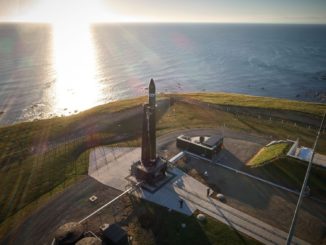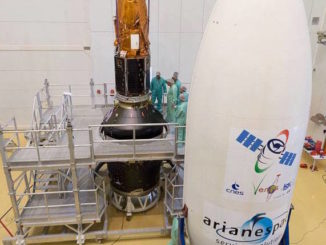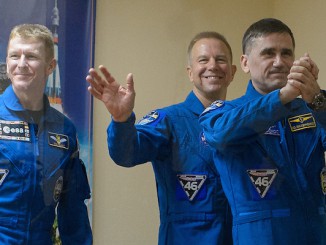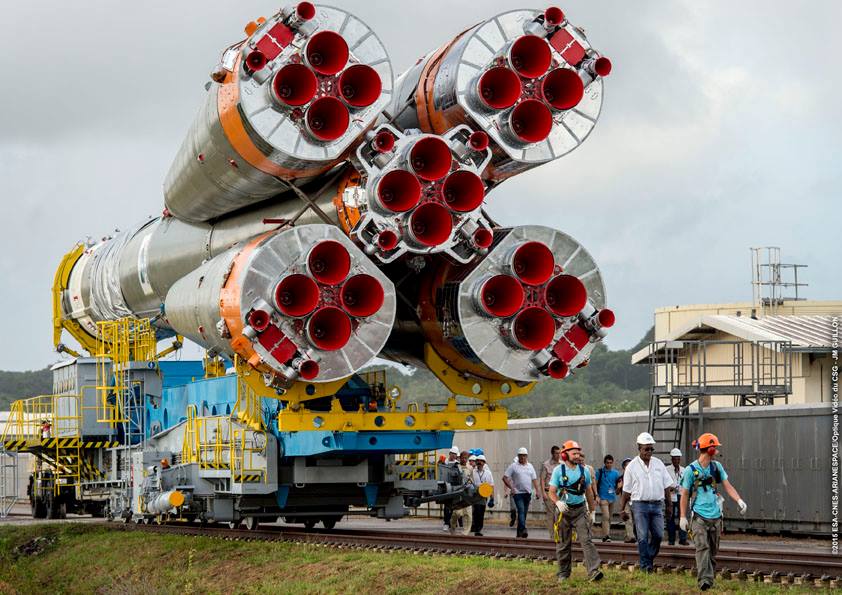
Five European satellites packaged inside an aerodynamic fairing have joined a Soyuz rocket its launch pad in the French Guiana jungle for a roaring ride into orbit Friday.
Headlined by Sentinel 1B, the second radar-equipped environmental surveillance satellite for Europe’s multibillion-dollar Copernicus Earth observing system, the five spacecraft are scheduled for launch at 2102:13 GMT (5:02:13 p.m. EDT) Friday from the Guiana Space Center on the northeastern shore of South America.
Technicians raised the satellites — attached to a Russian-made Fregat upper stage inside the Soyuz nose shroud — on top of the rocket Tuesday, several hours after the launcher emerged from its integration hangar and rode to the launch pad aboard a specialized rail car.
The Soyuz booster made the 700-meter (2,300-foot) journey Tuesday morning, departing its assembly building — known by the Russian acronym MIK — and arriving at the remote launch pad about a half-hour later.
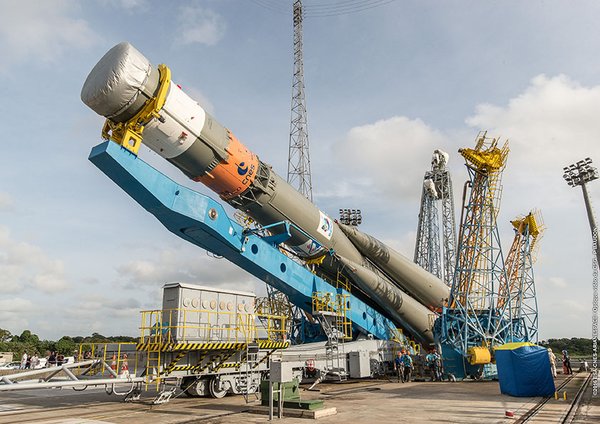
Hydraulic pistons raised the rocket vertical on its launch mount, and the facility’s 53-meter (174-foot) mobile gantry wheeled into place around the Soyuz booster. The mobile service tower is equipped with cranes that hoisted the Sentinel 1B satellite and its co-passengers on top of the rocket later in the day.
The Sentinel 1B radar imaging spacecraft is joined by France’s Microscope satellite, which will test the physics of free fall with 100 times more precision than possible on Earth. Scientists will monitor the motion of two test masses inside the Microscope satellite in a test of the equivalence principle, a concept first proposed by Galileo and now a key tenet of Einstein’s theory of general relativity, which states that objects fall the same way in vacuum.
Three CubeSats developed by university students in Belgium, Italy and Denmark are also stowed inside the Soyuz rocket’s payload fairing. They were selected from proposals submitted to the European Space Agency’s education-oriented “Fly Your Satellite!” program.
Friday’s launch will be the 14th flight of a Soyuz rocket from French Guiana, and Arianespace’s third launch of the year.
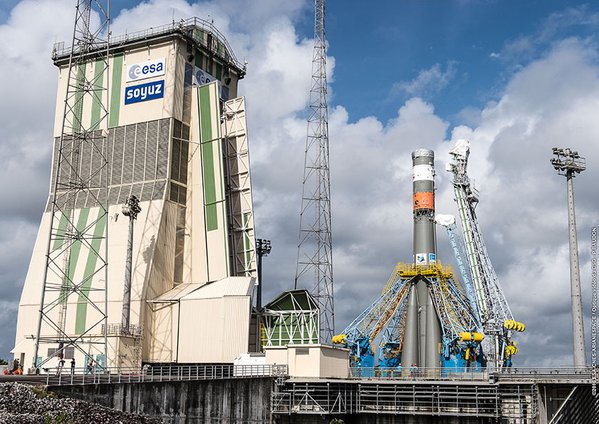
The launch profile for Friday’s multi-payload mission is more complex than usual.
The Soyuz rocket will deliver the Fregat upper stage and the mission’s satellite payloads on an initial suborbital trajectory less than nine minutes after liftoff Friday.
The Fregat main engine will ignite four times, first to place Sentinel 1B into its intended 686-kilometer-high (426-mile) orbit at an inclination of 98.18 degrees at T+plus 23 minutes, 35 seconds.
A second ignition of the Fregat engine will put the rocket into an elliptical orbit ranging in altitude from 453 kilometers (281 miles) to 665 kilometers (413 miles) to deploy the three CubeSats at T+plus 2 hours, 48 minutes, 11 seconds.
Two more firings of the upper stage engine will lead to separation of Microscope at T+plus 4 hours, 52 seconds in an orbit 711 kilometers (441 miles) above Earth inclined 98.23 degrees to the equator.
The photos below chronicle the final stages of the launch campaign.
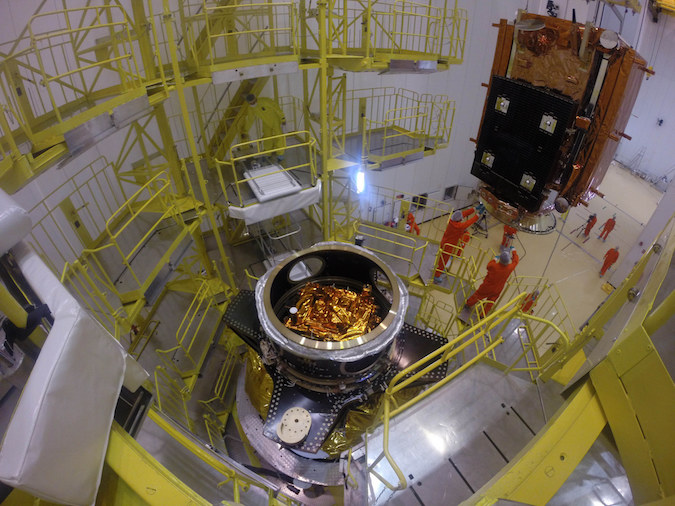
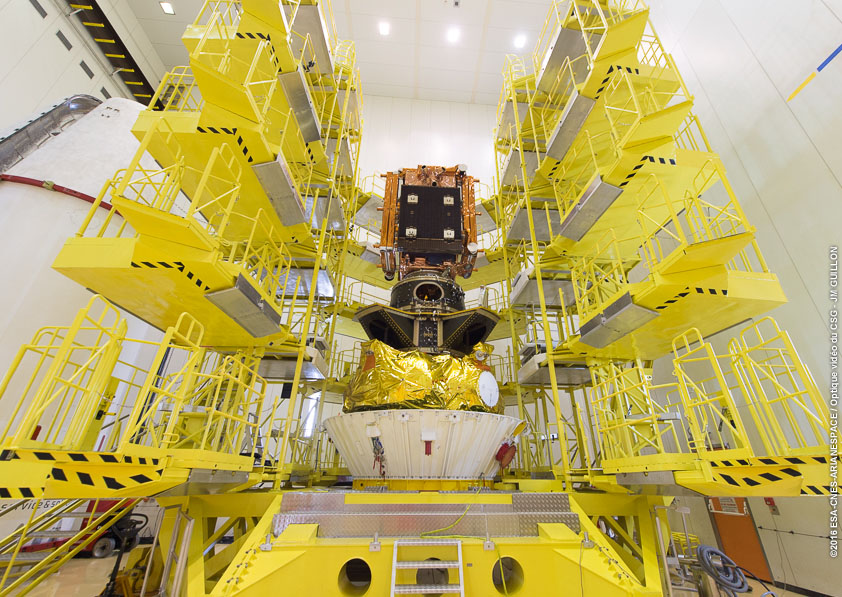

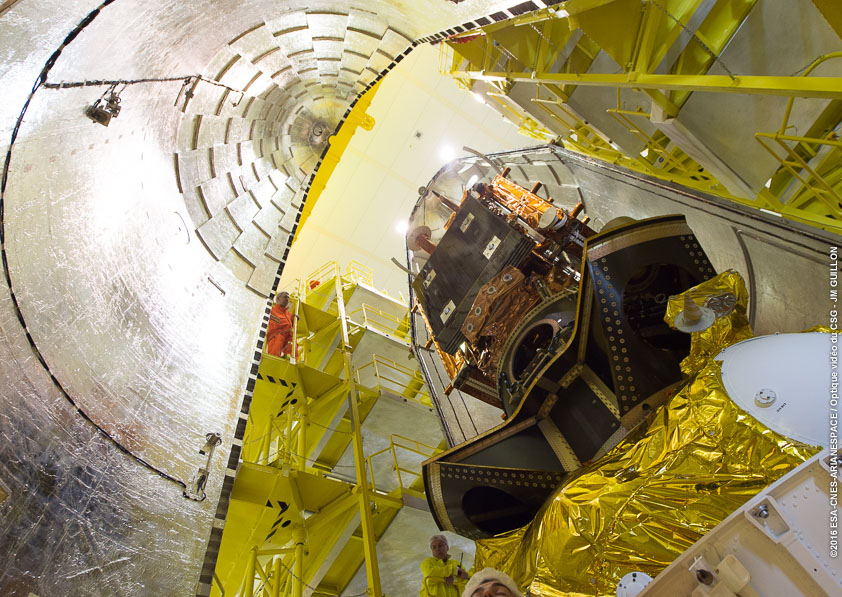
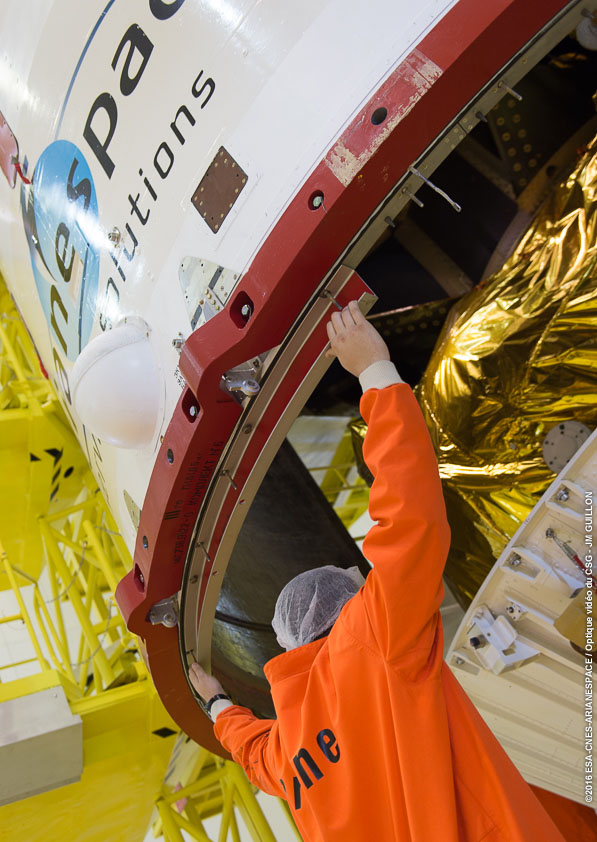
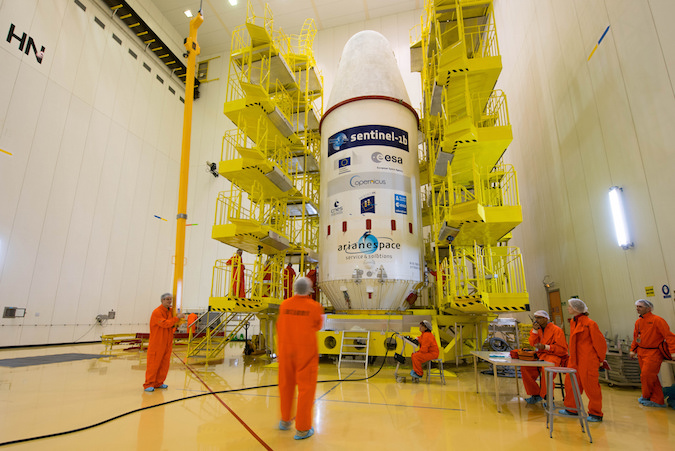
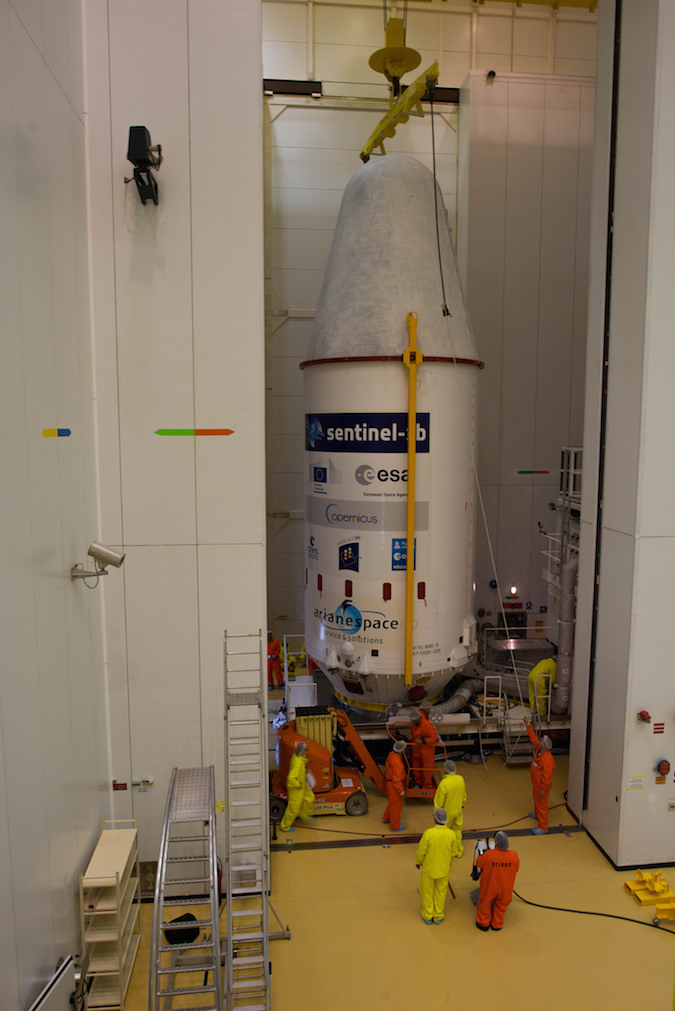
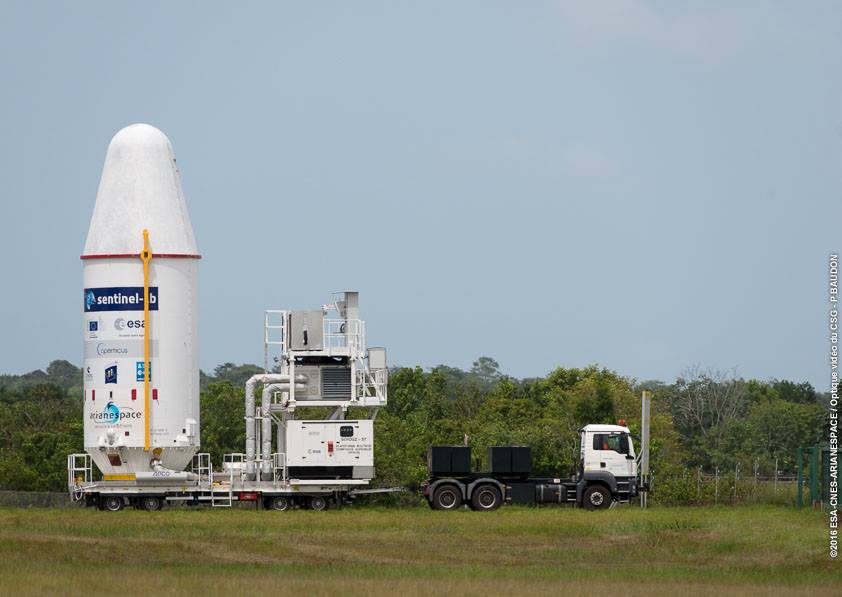
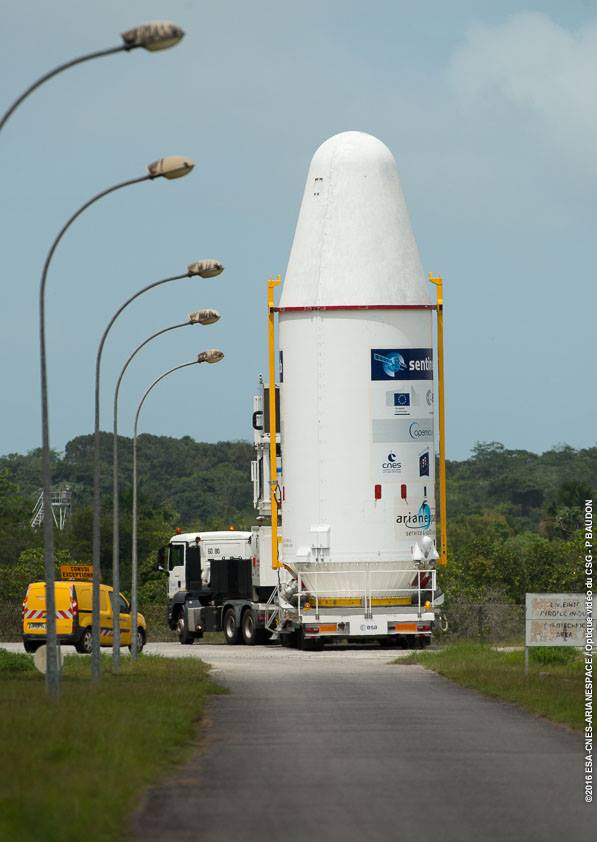
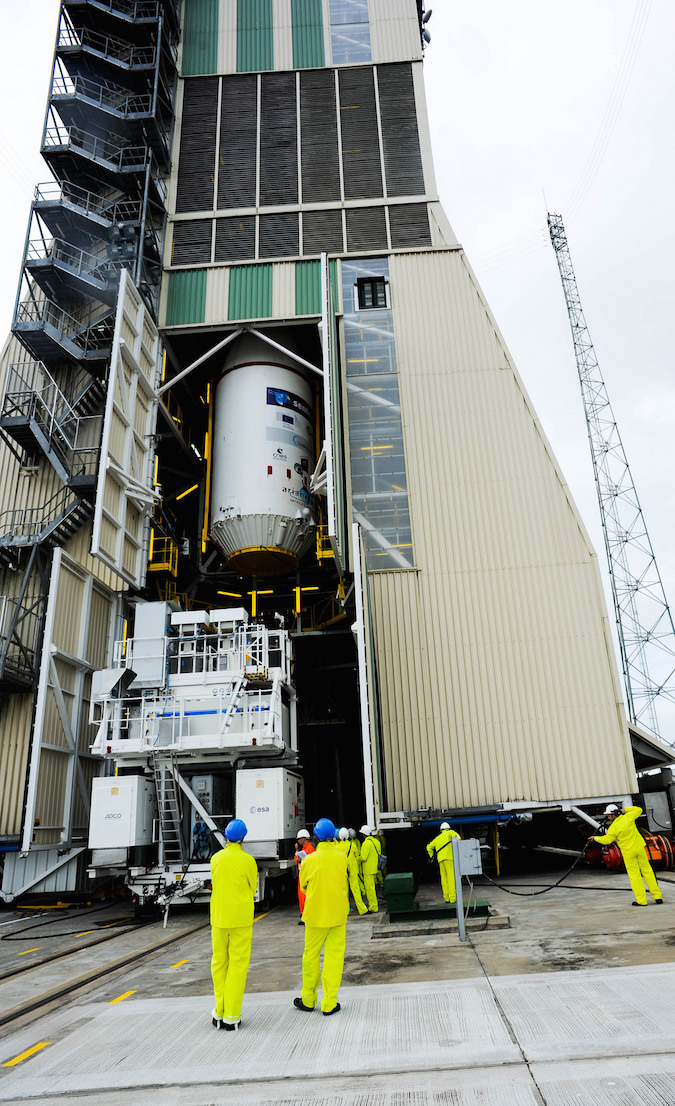
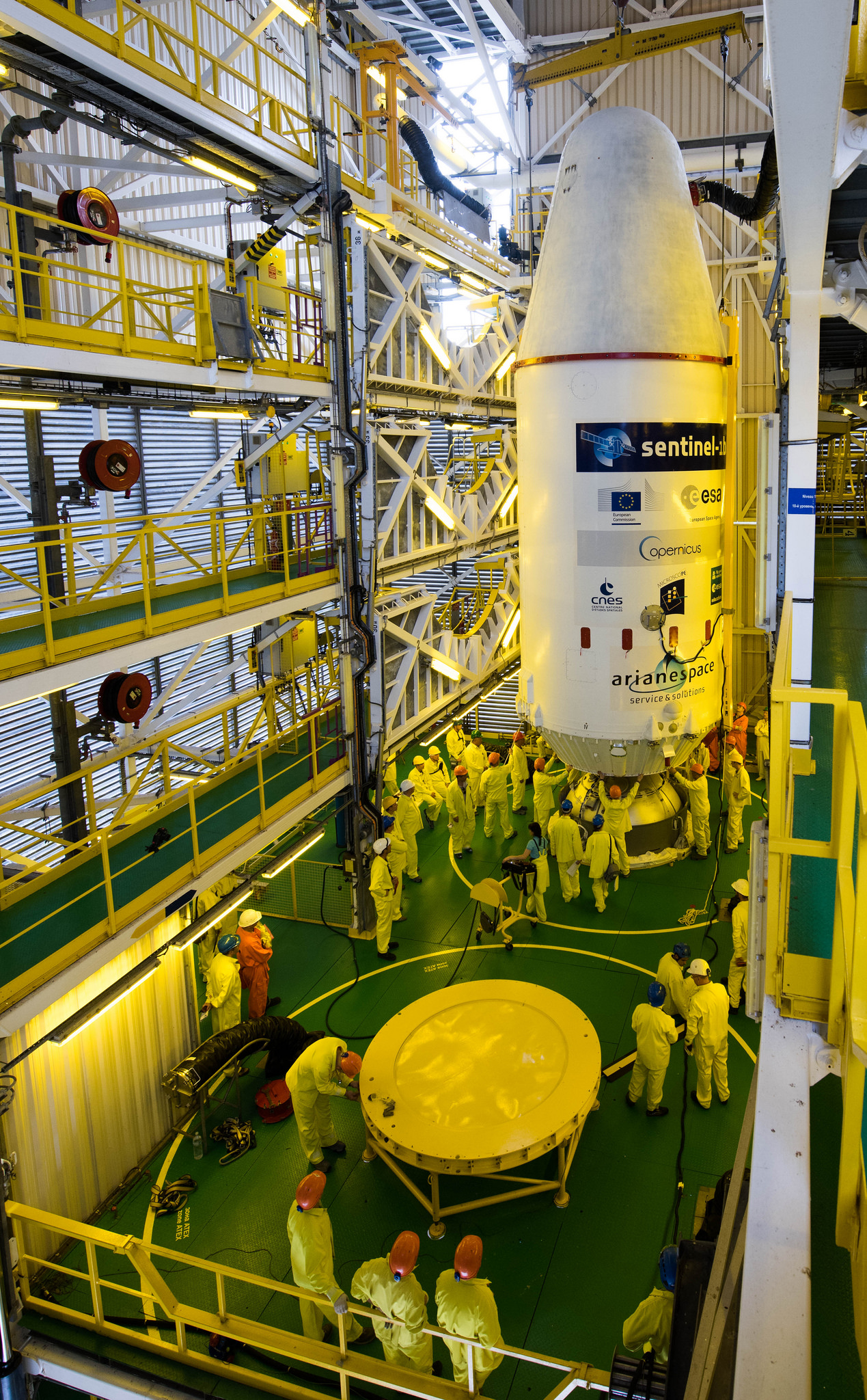
Email the author.
Follow Stephen Clark on Twitter: @StephenClark1.

